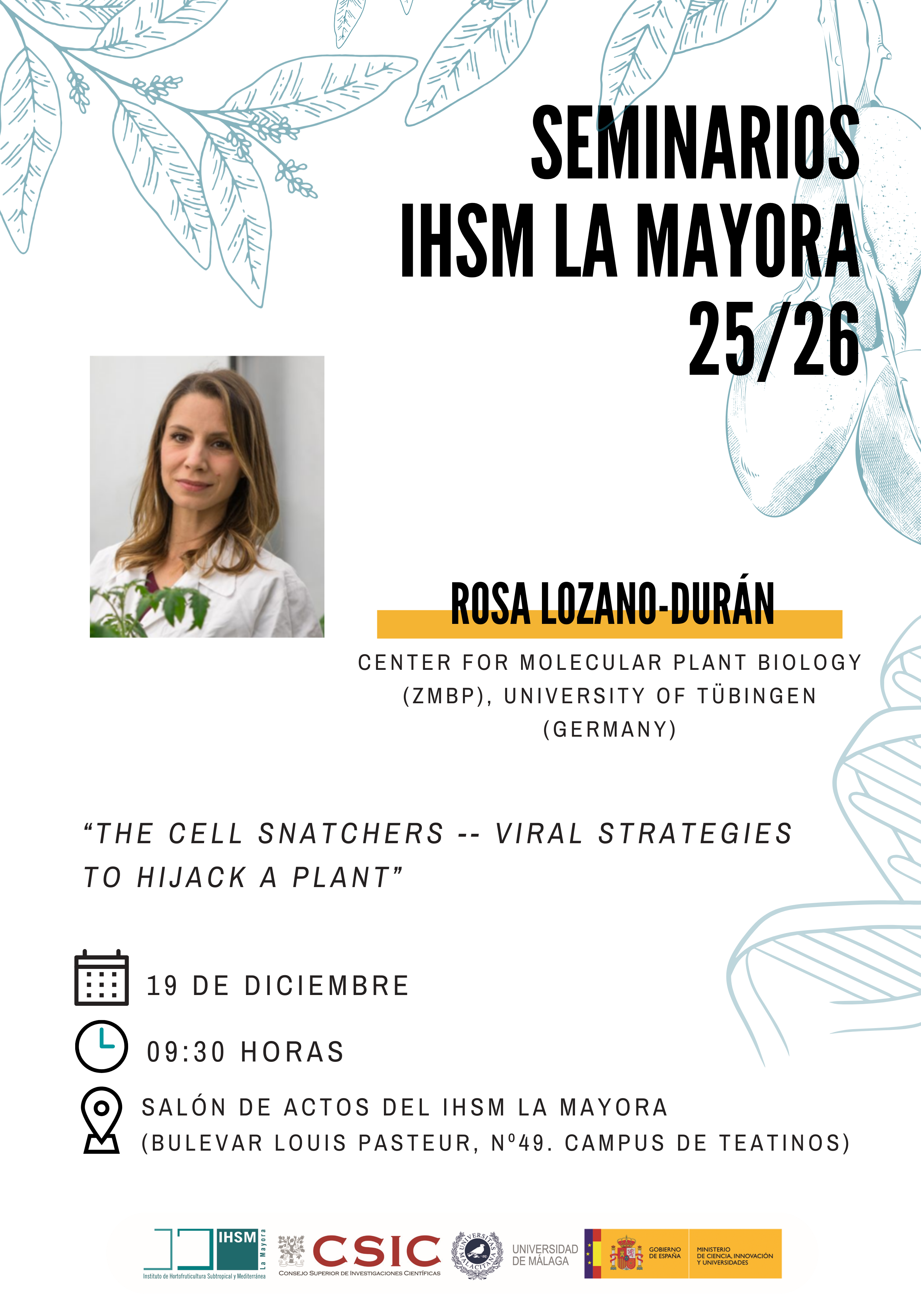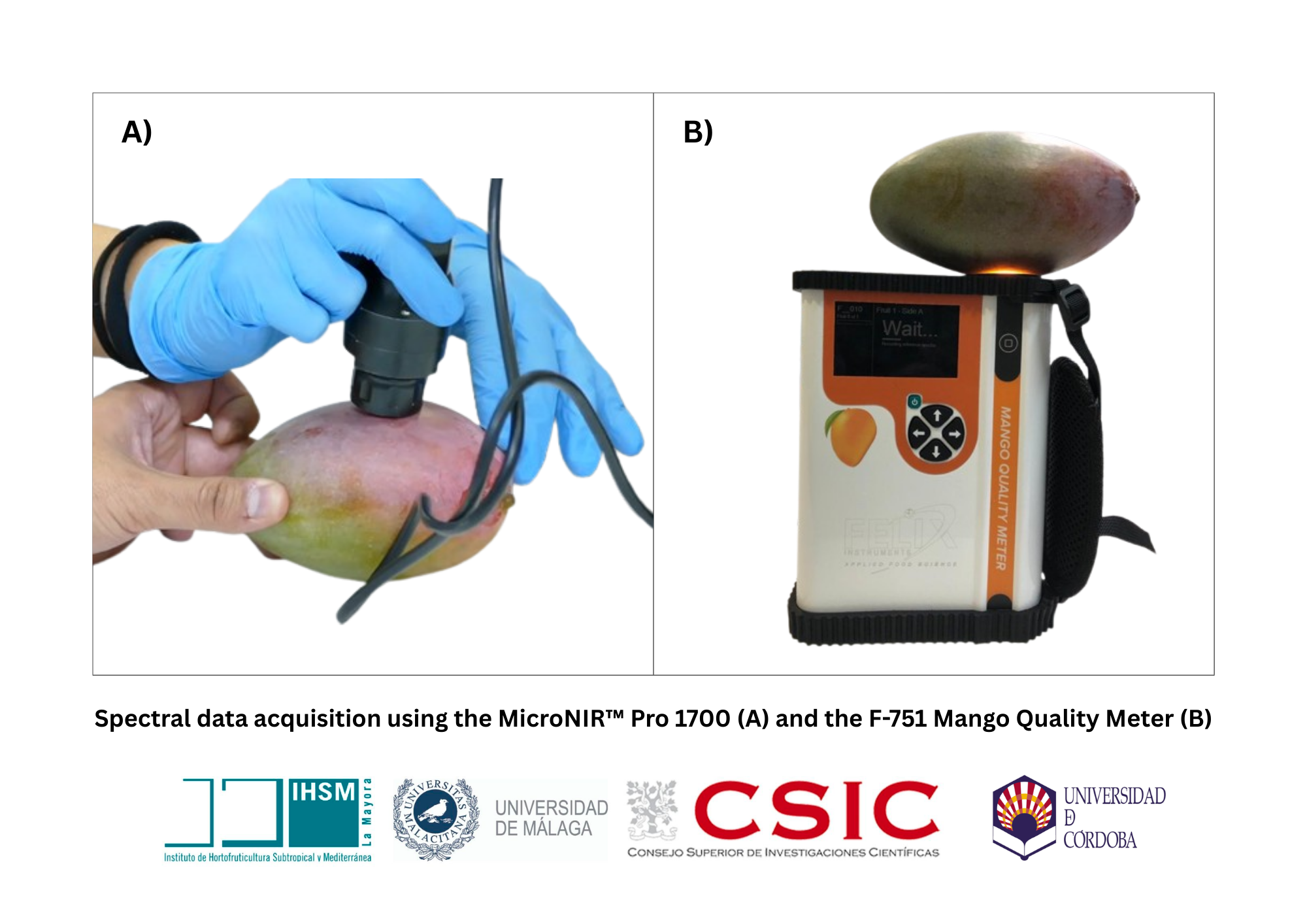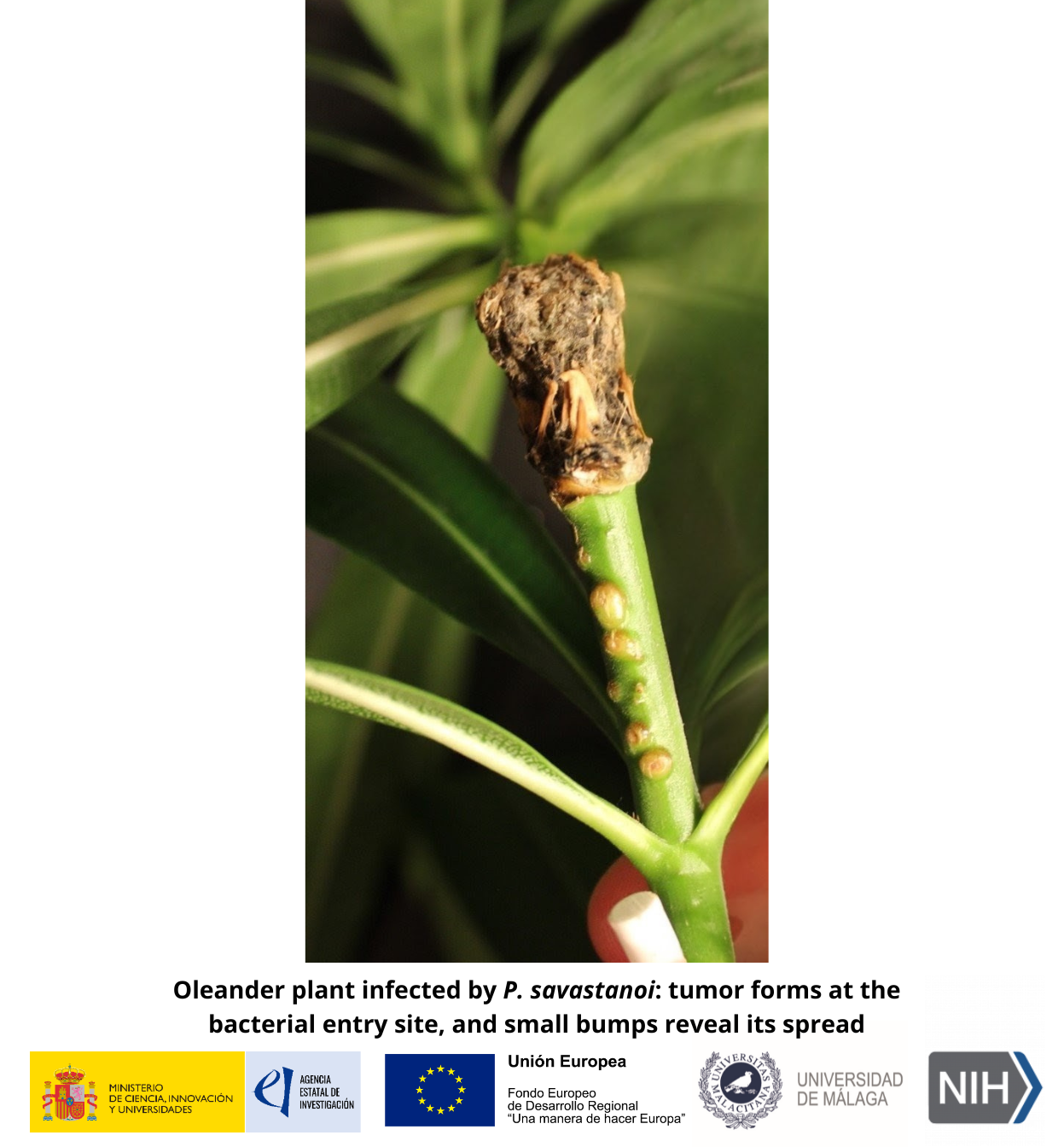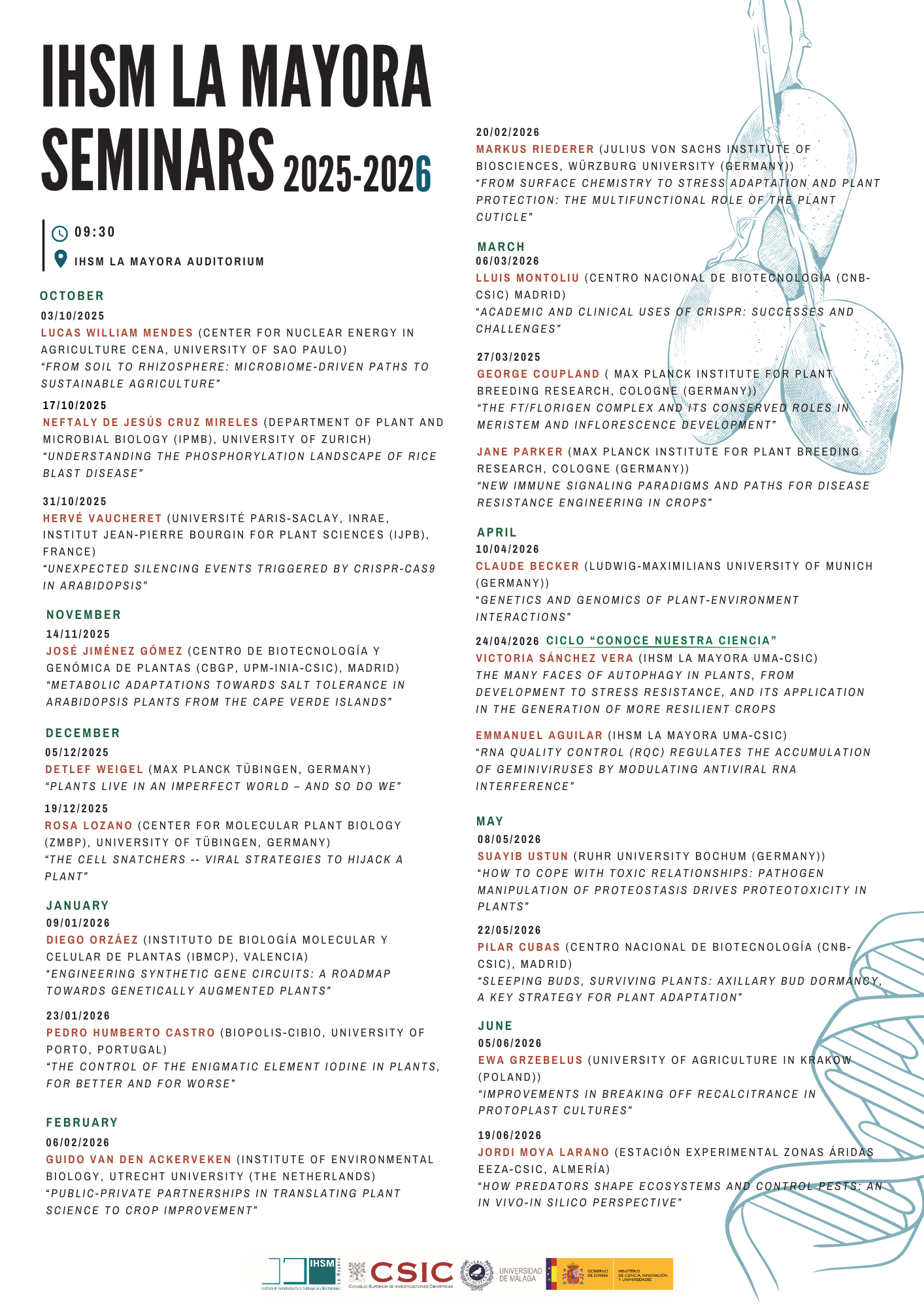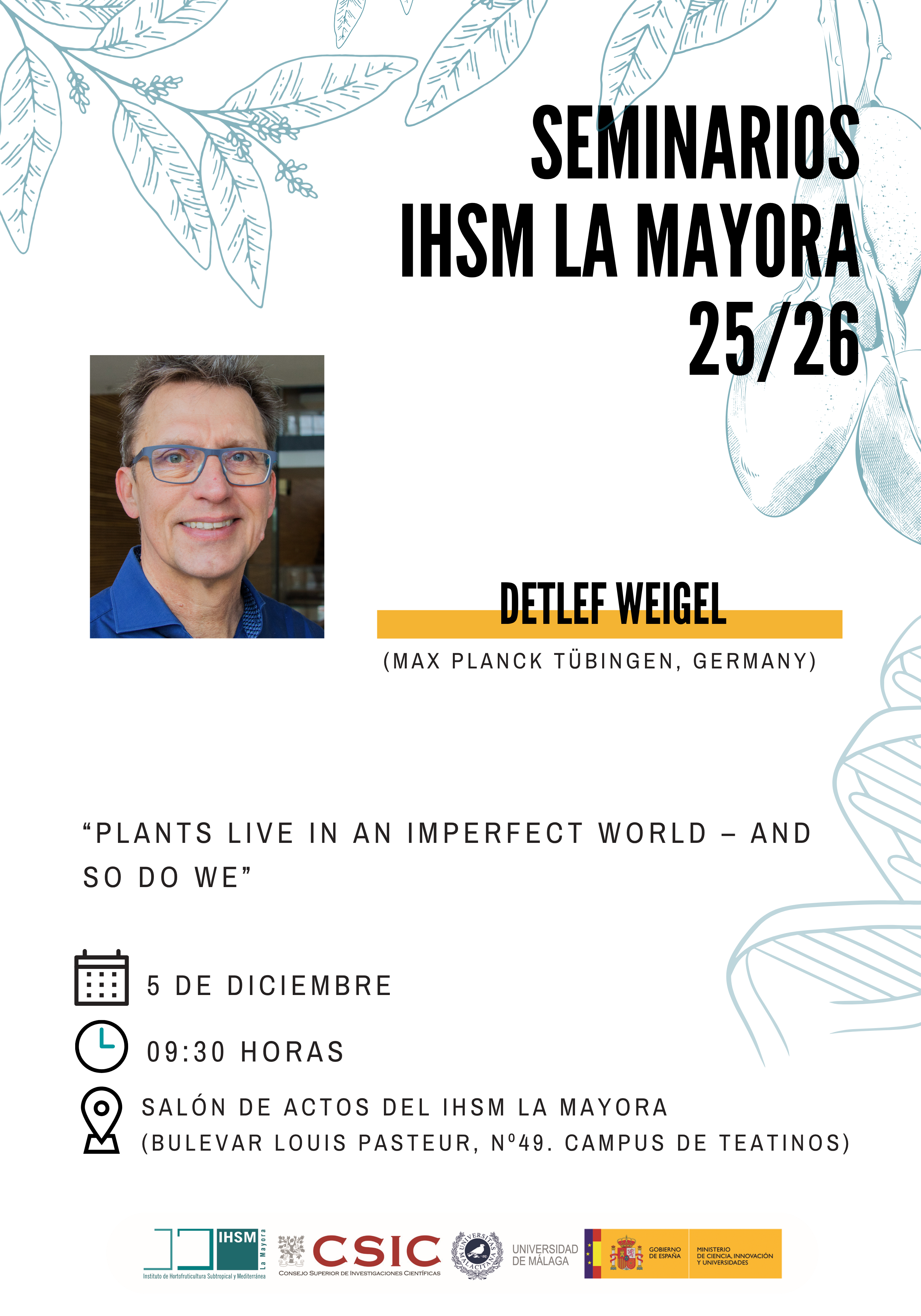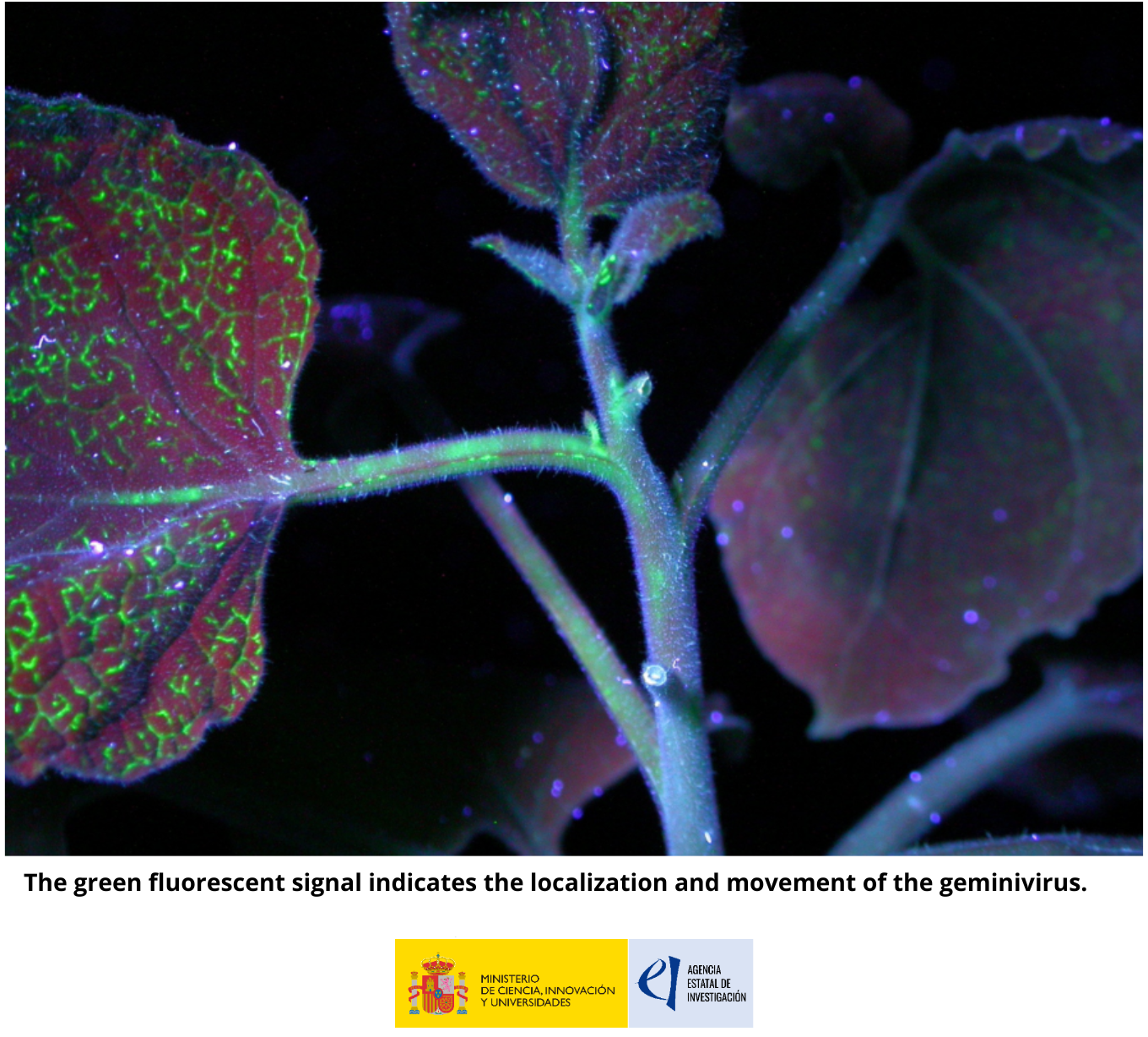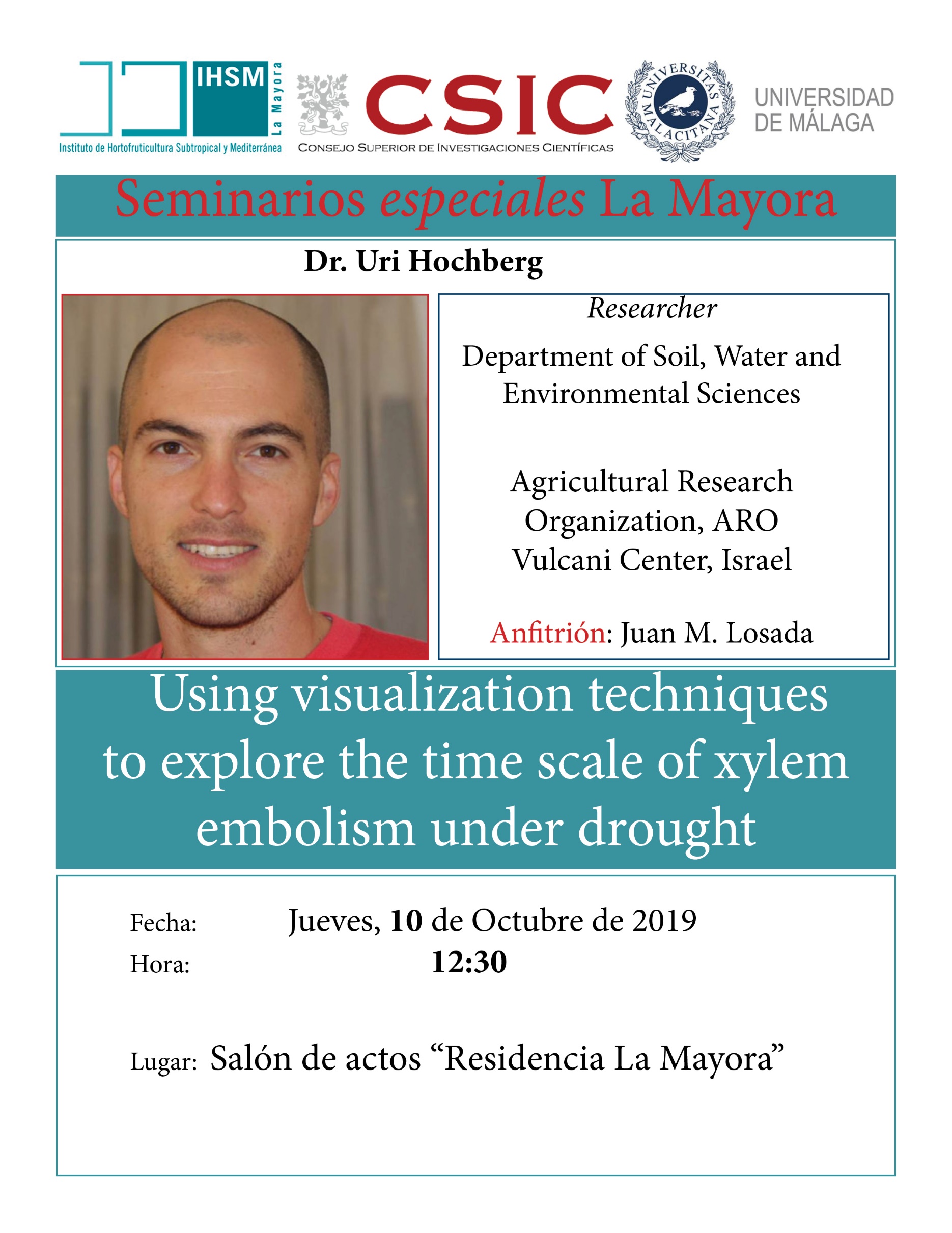
Seminarios internacionales en La Mayora: Uri Hochberg del Volcani Center de Israel
The temporal dynamics of embolism is debated, largely due to methodological limitations. Here we utilized the optical light transmission method to continuously monitor xylem cavitation in leaves of dehydrating grapevines (Vitis vinifera L.) in concert with stomatal conductance and stem and petiole hydraulic measurements. Magnetic resonance imaging (MRI) of an intact vine was used to continuously monitor xylem cavitation and flow rates in the stem of an intact vine during 10 days of dehydration. The results showed that complete stomatal closure preceded the appearance of embolism in the leaves and the stem by several days. Basal leaves were more vulnerable to xylem embolism than apical leaves and, once embolised, were shed, thereby preventing further water loss and protecting the hydraulic integrity of younger leaves and the stem. As a result, embolism in the stem was minimal even when drought led to complete leaf shedding. These findings suggest that grapevines avoid xylem embolism rather than tolerate it.

